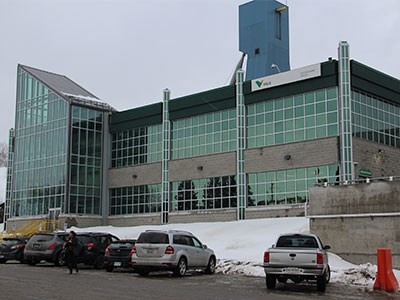It started as a hole in the ground, but after a $760-million investment, Vale's Totten Mine had its official opening Friday.
Dignitaries from around the province, including Ontario Premier Kathleen Wynne, Sudbury Mayor Marianne Matichuk, and Michael Gravelle, the province's minister of Northern Develoment and Mines, gathered around the ceremonial ribbon to welcome Vale's sixth mine in the Sudbury region, and its first to open in nearly 40 years.
Subury MPP Rick Bartolucci, Ontario's former minister of Northern Development and Mines, had was not present at the ceremony due to a prior commitment.
The mine was supposed to open in 2011, but a number of factors, including the global economic crisis in 2008 and 2009, slowed Vale's progress.
“There is an existing shaft there that was sunk some 40 years ago. It required a little more rehabilitation than was originally expected,” Vale spokesperson Angie Robson said in 2011.
“There have also been some geotechnical challenges with some of the ventilation raises,” Robson continued.
One of the major contractors working on the project was the Sudbury-based firm Cementation Mining Group. The company was responsible for rehabilitating the existing shaft, building a new headframe and hoist house, developing a new shaft and sinking two fresh air raises.
The project was originally supposed to cost $360 million, but as of 2011, the expected figure had jumped to around $760 million. The mine will produce about 2,200 tonnes of ore a day, with a 20-year lifespan.
The Worthington Offset, where the mine is located, is an area rich in copper, nickel and platinum group metals.
The mine's history goes back to the 1960s when a shaft was sunk, but was never fully developed, and later abandoned.
Peter Poppinga, CEO of Vale Canada, said the company made the investment into Totten Mine despite low nickel prices. He said assets such as Canada's strong human resources, a well educated workforce and a stable regulatory environment, encouraged the company to make the investment.
The mine is located on the traditional lands of the Sagamok Anishnawbek First Nation. Vale signed an impact benefit agreement with the First Nation that Vale's vice-president of Ontario and UK operations, Kelly Strong, said will provide job opportunities and share the economic benefits. He said the agreement was the first of its kind for the company in the Sudbury area.
Paul Eshkakogan, Sagamok First Nation's chief, said the impact benefit agreement was the culmination of 10 years of negotiations with Vale.
“The mine says to us and our youth that there's hope,” Eshkakogan said.
Twenty-four of the mine's 200 employees are from Sagamok First Nation.
“We want to show our youth that you can be successful, get an education and make that commitment,” Eshkakogan added.
The details of the impact benefit agreement between Vale and the Sagamok First Nation have not been released.
But Eshkakogan said his community's first priority was to ensure Vale took the proper environmental precautions to ensure the land would not be impacted more than necessary, and it would be fully rehabilitated once the project was over. “Many of our people still continue to live off the land through hunting and fishing, and that's still very important to us,” he said.
Vale hired 500 people during Totten Mine's construction, and has allocated in its 2014 budget $16 million in the Sudbury region on supplies, and a further $4.9 million on services and contracts, said Dick DeStefano, executive director of the Sudbury Area Mining Supply and Service Association (SAMSSA).
With all of its Sudbury operations combined, including Totten Mine, Vale is expected to contribute $500 million to Sudbury-area mining supply and service companies each year, DeStefano said.
Because the mine is new, Vale was able to implement the latest underground technologies at Totten Mine. The mine uses state-of-the-art technology, such as a wireless underground communication system, to achieve the highest standards of safety in producing copper, nickel and precious metal ores.
Strong, Vale's vice-president of Ontario and UK operations, said the mine also includes three water treatment plants on-site – and unusually high number.
“You need to be very diligent in how you develop a mine like this,” Strong said.




